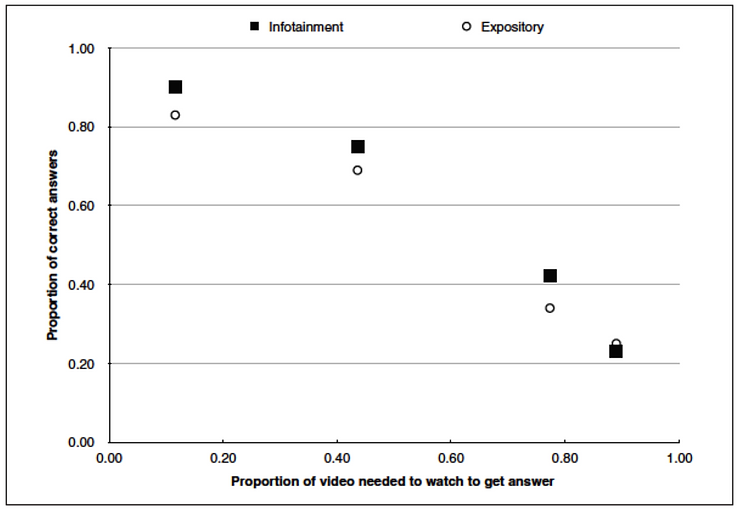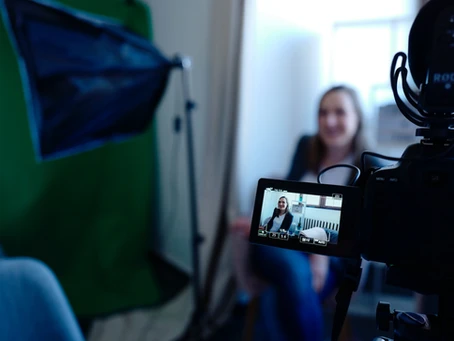Sir David Attenborough or Eddie Murphy? Narration Style Matters for Online Science Videos
By Michael Golden
Title: Transformation of the media landscape: Infotainment versus expository narrations for communicating science in online videos
Authors and Year: Lloyd S. Davis, Bienvenido León, Michael J. Bourk, Wiebke Finkler (2020)
Journal: Public Understanding of Science (closed access)
| TL;DR: This paper investigated the impacts of two main types of narration style for online science videos. An infotainment style (which uses humour, personality and informal language) was found to be advantageous if targeting a less-educated audience, whereas an expository narration (which uses formal language and conveys authority) was preferable for audiences with higher levels of education. Infotainment narration was also found to be better for learning, so this style may be favoured if the primary objective of the communication is for the audience to remember specific facts presented in the video.Why I chose this paper: Whether for work or fun I thoroughly enjoy creating and consuming science-based video content, so I was eager to better understand the impact narration style has on audiences. |
The Background
The way in which we source information and entertainment has changed dramatically in recent years – with online on-demand videos (think YouTube, Facebook, Instagram etc.) becoming more and more popular. Given they are now such an important communication tool, it is vital for science communicators to consider how best to get their message across in online videos.
Deciding on the narration style is an important choice when creating an online science video; should narrators be trying to channel their inner Eddie Murphy or Sir David Attenborough? And what impact does this choice have on audience engagement and learning outcomes? This study by Davis et al has provided some key insights into this question, by comparing two main styles of narration;
- ‘Infotainment’ – a combination of information and entertainment, this is the Eddie Murphy example, which focuses on using colloquial language, emotion, humour and personality
- ‘Expository’ – the Sir David Attenborough approach, which is more serious and fact-based, using formal language and conveying an aura of authority
The Method
To conduct the study, the researchers developed two identical videos about climate change, with the only difference between the two being the style of narration. They collected results using an online survey, where a total of 870 participants were randomly shown either the infotainment or expository version of the video, and then asked a series of questions. The viewers were asked if they liked the video, if they believed the information being presented and if they could recall specific facts. Both English and Spanish versions of the films were made, with participants able to choose their preferred language.
The Findings
The key message from the research is that both narration styles are useful, but which one you should choose depends on your target audience and the objectives of the science communication activity.
The results of the study show that the level of education of the target audience is an important factor for science communicators to consider. Those with a university education had higher likeability and believability scores for the expository version, suggesting this style is the clear preference for more educated audiences. For those without a university education, the results favour the infotainment style but not as convincingly; the likeability score was higher for infotainment, but the level of believability was similar between the two narration styles. Given that an earlier study from the same author had found that those without a university education are often the most challenging section of the public to engage for science communicators, this research provides a potential solution; upping the entertainment value of your video could help you reach this audience.
There were also interesting findings for information retention. The infotainment narration was found to be the better style for learning, with viewers of this version showing more accuracy in recalling the facts provided in the video (see Figure 1 below). This supports the findings of previous research that entertaining narratives are effective in improving comprehension and information retention when communicating science – so make sure you keep working on your storytelling ability!
Interestingly, for either narration style, viewers were better at recalling information that was provided at the start of the video rather than the end; as shown in Figure 1 below, a substantial drop off in the proportion of correct answers was observed the further into the video the information was given. This goes against traditional storytelling structures where the ‘take home’ message is often saved for the end, and rather supports an inverted pyramid structure like that used in hard news journalism, where the key information is placed upfront.

The Final Word
Beyond narration style, there is no doubt that several other factors are also important in determining the effectiveness of an online science video; the video length, the education level of the information provided and cultural elements should also be considered, and more research is needed in these areas. But when it comes down to deciding between Sir David and Eddie (or perhaps lesser-known versions of the two) to narrate your next science video, thinking about who your audience is, and what your objectives are, will help you make a wise decision.
Edited by Kirsten Giesbrecht and Jacqueline Goldstein

